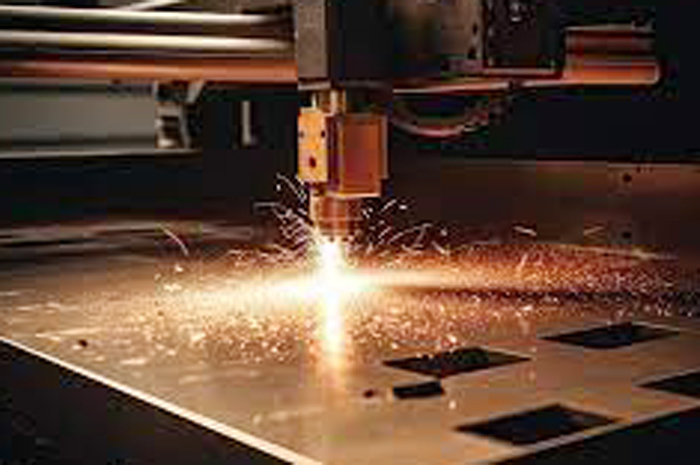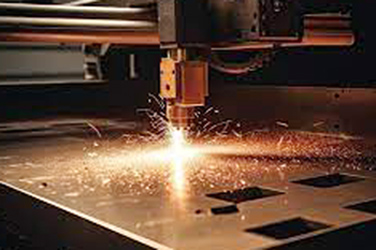Unveiling the diverse world of plasma cutters! From light-duty home use to heavy industrial cutting, understanding the types of plasma cutters available can help you make the right choice for your specific needs. Whether you’re a DIY enthusiast or a professional fabricator, selecting the right type of plasma cutter is crucial for achieving optimal results in your metal cutting projects.
In this article, we will delve into the various types of plasma cutters, their strengths, and ideal applications, ensuring you’re equipped with the knowledge to make an informed decision. From handheld cutters designed for portability to mechanized systems for precision cutting, we will explore the features and benefits of each type, empowering you to match your cutting requirements with the perfect plasma cutter. Get ready to navigate the world of plasma cutting technology as we break down the different types and guide you toward the ideal choice for your cutting tasks.

Photos: tdhmfg.com
Understanding the Different Types of Plasma Cutters
Plasma cutters come in various types, each with its own set of features and capabilities. Understanding the differences between these types is essential for selecting the right tool for your specific cutting needs.
Handheld plasma cutters: Handheld plasma cutters are designed for ease of use and portability. They are ideal for small-scale cutting tasks and are commonly used by DIY enthusiasts and small workshops. These cutters offer flexibility and maneuverability, allowing users to make intricate cuts with ease. Additionally, handheld plasma cutters are relatively affordable, making them a popular choice for hobbyists and small businesses.
Mechanized plasma cutters: Mechanized plasma cutters, on the other hand, are designed for industrial applications that require precision and efficiency. These cutters are typically mounted on CNC cutting tables or other automated systems, allowing for automated and repeatable cutting processes. Mechanized plasma cutters are commonly used in large-scale manufacturing facilities and metal fabrication shops where high-volume cutting is required. They offer superior cutting speed and accuracy, making them essential tools for commercial operations.
CNC plasma cutters: CNC plasma cutters take mechanized cutting to the next level by integrating computer numerical control (CNC) technology. These cutters are capable of executing complex cutting patterns with a high degree of accuracy, making them suitable for intricate and detailed cutting tasks. CNC plasma cutters are commonly used in industries such as automotive, aerospace, and construction, where precision cutting is essential for producing high-quality parts and components. The ability to program and automate cutting processes makes CNC plasma cutters a valuable asset for businesses seeking to optimize their production workflows.
Inverter-based plasma cutters: Inverter-based plasma cutters are known for their portability and energy efficiency. These cutters use inverter technology to convert input power into a high-frequency output, resulting in a more stable and efficient cutting process. Inverter-based plasma cutters are lightweight and compact, making them ideal for on-site cutting tasks and jobs that require mobility. They are commonly used in construction, maintenance, and repair applications where access to power sources may be limited. Despite their compact size, inverter-based plasma cutters deliver impressive cutting performance, making them a versatile choice for various cutting scenarios.
High-definition plasma cutters: High-definition plasma cutters are designed for high-precision cutting applications that demand superior edge quality and minimal dross. These cutters utilize advanced technology to produce clean, smooth cuts with minimal material distortion. High-definition plasma cutters are commonly used in industries such as metal fabrication, automotive manufacturing, and structural steel construction, where the quality of the cut edges is critical to the overall product quality. By incorporating advanced plasma cutting techniques, high-definition plasma cutters can achieve exceptional cutting results, making them indispensable tools for precision-driven industries.
Factors to Consider When Choosing a Plasma Cutter
When selecting a plasma cutter, several factors should be taken into consideration to ensure that the chosen tool aligns with your specific cutting requirements.
First and foremost, consider the thickness of the materials you intend to cut. Different types of plasma cutters have varying cutting capacities, so it’s essential to choose a cutter that can handle the thickness of the materials you work with. Consider the type of metal you will be cutting, as certain metals may require specific cutting technologies to achieve optimal results.
Another important factor to consider is the intended use of the plasma cutter. If you primarily work on small-scale projects or require on-site cutting capabilities, a handheld or inverter-based plasma cutter may be the most suitable option. Conversely, if you operate a metal fabrication shop or require high-volume cutting with precision, a mechanized or CNC plasma cutter would be a better fit for your needs.
Power requirements, portability, cutting speed, and ease of maintenance are also crucial considerations when choosing a plasma cutter. Assessing these factors will help you narrow down your options and select a cutter that not only meets your current needs but also aligns with your long-term cutting requirements.
Popular Brands and Models of Plasma Cutters
Several reputable brands offer a wide range of plasma cutters to cater to diverse cutting needs. Among the popular brands known for producing high-quality plasma cutting equipment are Hypertherm, Miller Electric, ESAB, Lincoln Electric, and Thermal Dynamics. Each brand offers a selection of plasma cutters designed to deliver exceptional cutting performance and reliability.
Hypertherm, a leading manufacturer of plasma cutting systems, is renowned for its innovative technology and commitment to precision cutting. The Hypertherm Powermax series, including models such as the Powermax45 XP and Powermax65, offers versatile and durable cutting solutions for a wide range of applications.
Miller Electric, another prominent player in the plasma cutting industry, offers a range of plasma cutters known for their cutting-edge features and user-friendly design. The Miller Spectrum series, featuring models like the Spectrum 375 and Spectrum 625, provides cutting-edge performance and flexibility for various cutting tasks.
ESAB, Lincoln Electric, and Thermal Dynamics also have a strong presence in the plasma cutting market, with their respective product lines catering to the needs of hobbyists, small businesses, and industrial users. These brands are recognized for their commitment to quality, performance, and customer satisfaction, making them go-to choices for professionals seeking reliable plasma cutting solutions.
Conclusion
As we conclude our exploration of the different types of plasma cutters, it’s evident that the world of plasma cutting technology offers a diverse array of tools to meet the needs of users across various industries and applications. Whether you prioritize portability, precision, or high-definition cutting capabilities, there’s a plasma cutter designed to align with your specific cutting requirements.
By understanding the strengths and ideal applications of each type of plasma cutter, you can make an informed decision when selecting a cutting tool for your projects. Consider the factors that influence your cutting needs, explore the offerings of reputable brands, and assess the features and capabilities of different plasma cutters to find the perfect match for your cutting tasks.
Whether you’re a DIY enthusiast, a small business owner, or a professional fabricator, the right plasma cutter can elevate the quality and efficiency of your metal cutting endeavors. Embrace the power of plasma cutting technology and unlock new possibilities in metal fabrication and beyond.
